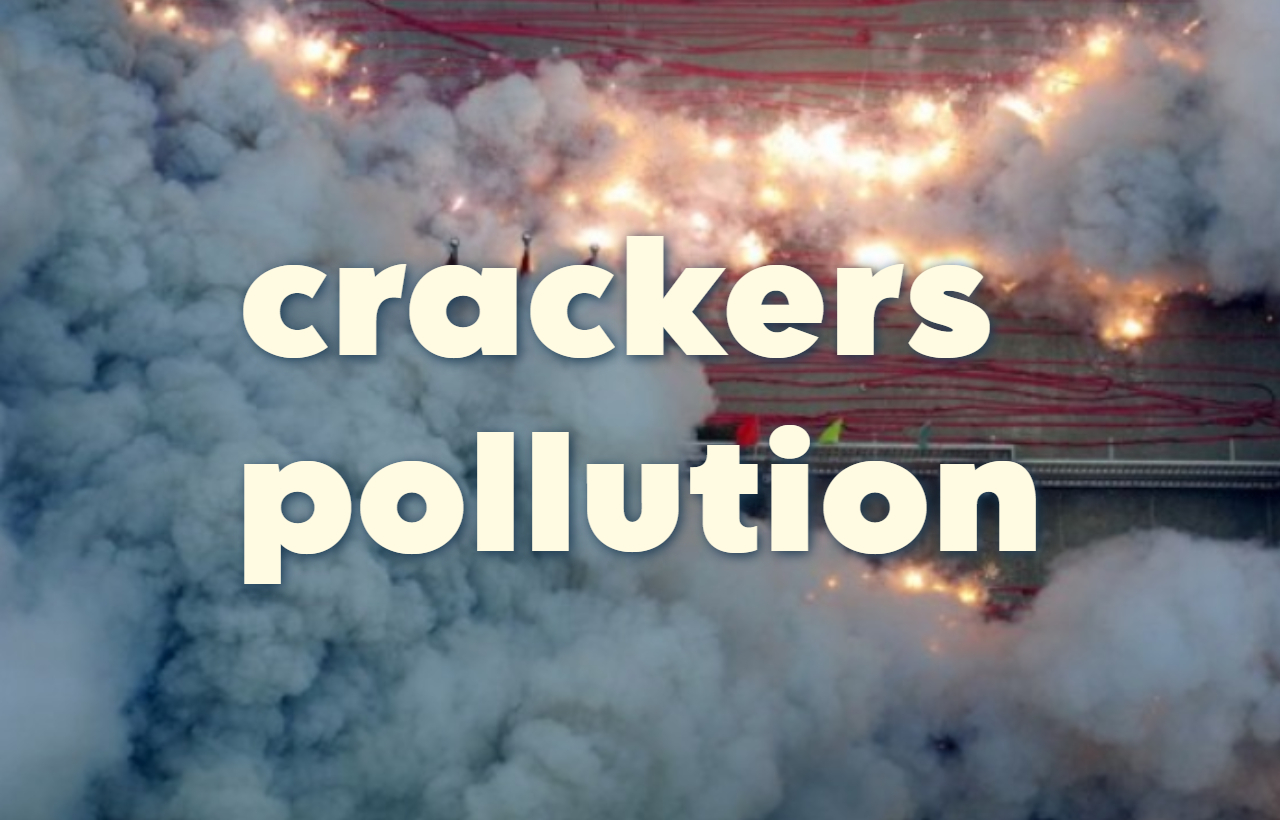The festive season brings with it celebrations, gatherings, and, unfortunately, an increase in pollution due to firecrackers. While bursting crackers is a cultural and traditional practice during festivals like Diwali, it’s essential to be aware of the harmful effects of crackers on the environment, health, and the well-being of animals. Crackers smoke, filled with toxic chemicals, contributes significantly to environmental pollution and poses risks to living beings. In this article, we’ll dive into how crackers smoke impacts us, with a breakdown of its harmful elements, a look at the adverse effects, and solutions to reduce its impact.
Table of Contents
- Introduction to Crackers Smoke and its Constituents
- Harmful Effects of Firecrackers in 100 Words
- Harmful Effects of Crackers in Points
- The Effects of Crackers on Animals
- Disadvantages of Crackers in Diwali
- Advantages and Disadvantages of Crackers
- FAQs Related to Crackers Smoke Causes
Introduction to Crackers Smoke and Its Constituents
Firecrackers contain chemicals that create visual effects like sparkling lights, loud noises, and color displays. However, these chemicals are hazardous once ignited. Crackers release gases and particulates, including sulfur dioxide, nitrogen oxides, and carbon monoxide, which have severe effects on air quality. The harmful effects of crackers on the environment worsen when the particulate matter (PM 2.5 and PM 10) levels spike due to firecrackers smoke, causing smog and poor air quality.
Common Chemicals Found in Crackers and Their Effects:
| Chemical | Effect on Environment | Health Impact |
|---|---|---|
| Sulfur dioxide (SO₂) | Causes acid rain, reduces visibility | Respiratory issues, eye irritation |
| Carbon monoxide (CO) | Contributes to greenhouse gases | Headache, dizziness, can be fatal in high concentrations |
| Lead compounds | Contaminates soil and water | Neurological damage, kidney failure |
| Cadmium | Long-lasting environmental pollutant | Causes cancer, respiratory issues |
| Particulate Matter (PM) | Reduces air quality, causes smog | Causes asthma, lung infections |
| Aluminum | Produces white sparkles in crackers, contaminates soil | Respiratory issues, skin irritation |
Harmful Effects of Firecrackers in 100 Words
Firecrackers release a host of toxic pollutants into the air, including particulate matter, sulfur dioxide, nitrogen oxides, and heavy metals. These pollutants not only degrade air quality but also harm human health. When inhaled, the particulate matter causes respiratory illnesses like asthma, bronchitis, and even lung cancer. The harmful effects of crackers on the environment are compounded during festivals when crackers are widely used, creating smog and reducing visibility. Firecrackers are especially detrimental for sensitive groups, including children, the elderly, and people with pre-existing health conditions. Additionally, these pollutants disrupt the well-being of animals and birds.
Harmful Effects of Crackers in Points
- Air Pollution: The release of pollutants, particularly PM 2.5 and PM 10, significantly degrades air quality.
- Health Hazards: Harmful chemicals can cause respiratory issues, skin problems, and even lead to cancer.
- Noise Pollution: The loud sound of crackers causes hearing loss and stress, especially in infants, the elderly, and animals.
- Acid Rain: Chemicals like sulfur dioxide can lead to acid rain, harming vegetation and water sources.
- Soil Contamination: Metal particles in cracker residues settle in the soil, affecting its quality and harming plants.
- Increased Carbon Footprint: Firecrackers emit carbon dioxide, contributing to global warming.
- Reduced Visibility: Thick smog reduces visibility, leading to accidents and transportation disruptions.

The Effects of Crackers on Animals
Animals, particularly pets and wildlife, suffer immensely during festivals involving firecrackers. The loud sounds cause fear, anxiety, and even physical harm to animals. Birds are known to fly away from their nests in fear, and many cannot find their way back, leading to abandonment of their young ones. Dogs and cats are highly sensitive to sound, and the deafening noise can lead to panic attacks, seizures, and sometimes even cardiac arrests.
Additionally, stray animals are at risk of being injured or burned when they accidentally come into contact with discarded or ignited crackers. The chemical residues can also lead to poisoning if ingested.
Disadvantages of Crackers in Diwali
The harmful effects of crackers on the environment are especially evident during Diwali. Here’s how crackers negatively impact the festival season:
- Increased Pollution: Diwali sees a significant rise in PM levels, leading to dense smog that affects respiratory health.
- Strain on Healthcare System: Hospitals receive an influx of patients suffering from respiratory and eye issues due to pollution.
- Noise Disturbance: The continuous bursting of crackers disturbs the peace and causes stress to vulnerable groups and animals.
- Waste Generation: The remains of firecrackers contribute to solid waste, which is hard to dispose of and further contaminates the environment.
Advantages and Disadvantages of Crackers
Though there’s a traditional aspect tied to the use of crackers, it’s essential to weigh their pros and cons, especially with environmental and health concerns.
| Advantages | Disadvantages |
|---|---|
| Adds to the festive atmosphere | Causes severe air pollution, degrading air quality and visibility |
| A cultural tradition that connects people | Creates noise pollution, disturbing both people and animals |
| Used to express joy and celebrations | Leads to respiratory and other health issues due to toxic fumes |
| Provides employment in cracker manufacturing | The production and disposal of crackers contribute to environmental degradation and worker health risks |
FAQs Related to Crackers Smoke Causes
Q1: What are the harmful effects of crackers on the environment?
Crackers release pollutants like sulfur dioxide, carbon monoxide, and particulate matter, which degrade air quality, cause respiratory illnesses, and contribute to smog. They also have long-term effects on soil and water contamination.
Q2: How do crackers affect animals during Diwali?
The loud noise and sudden flashes cause panic and stress in animals, sometimes leading to health complications like seizures or heart attacks. Birds, in particular, are disoriented by the noise and light, affecting their natural behaviors.
Q3: What are the advantages and disadvantages of crackers?
While crackers are part of traditional celebrations, they also cause significant harm to the environment, health, and well-being of animals, outweighing their advantages in many cases.
Q4: Why are firecrackers dangerous for children and the elderly?
The particulate matter and chemicals released by crackers can cause respiratory and heart issues, which are especially dangerous for children with developing lungs and elderly people with weaker immune systems.
Q5: Can the harmful effects of crackers in points help spread awareness?
Yes, breaking down the harmful effects of crackers in points, such as air pollution, health risks, and impact on animals, makes it easier for people to understand the drawbacks and avoid cracker use.


